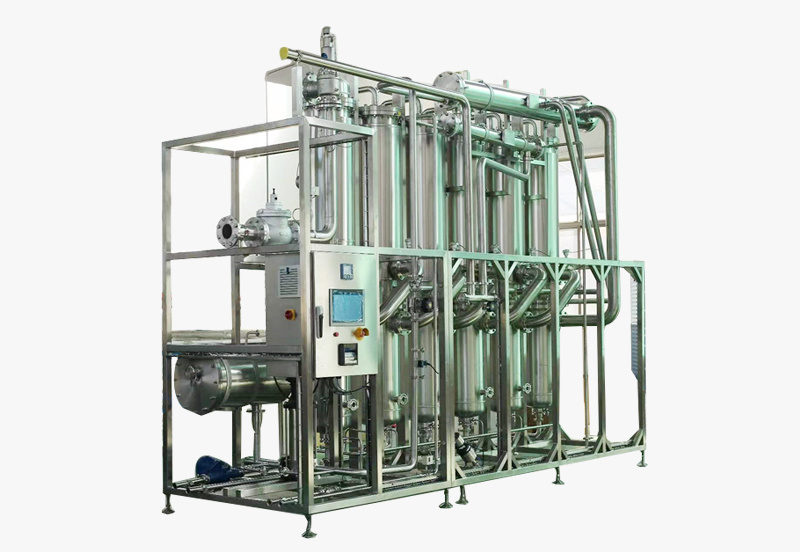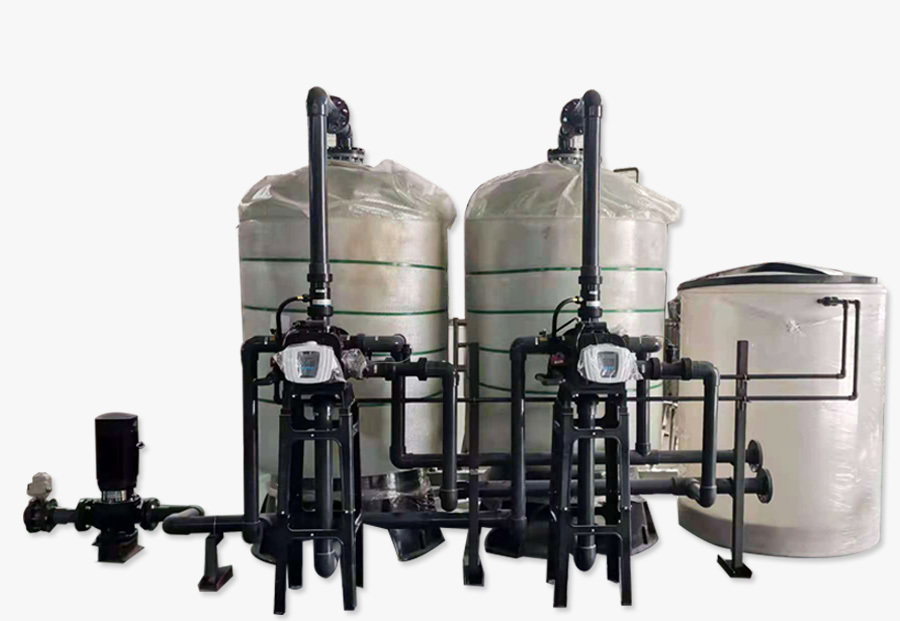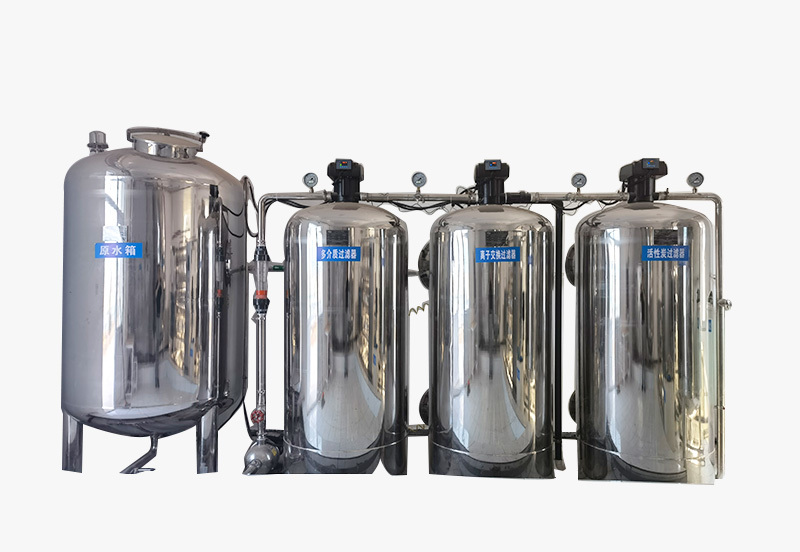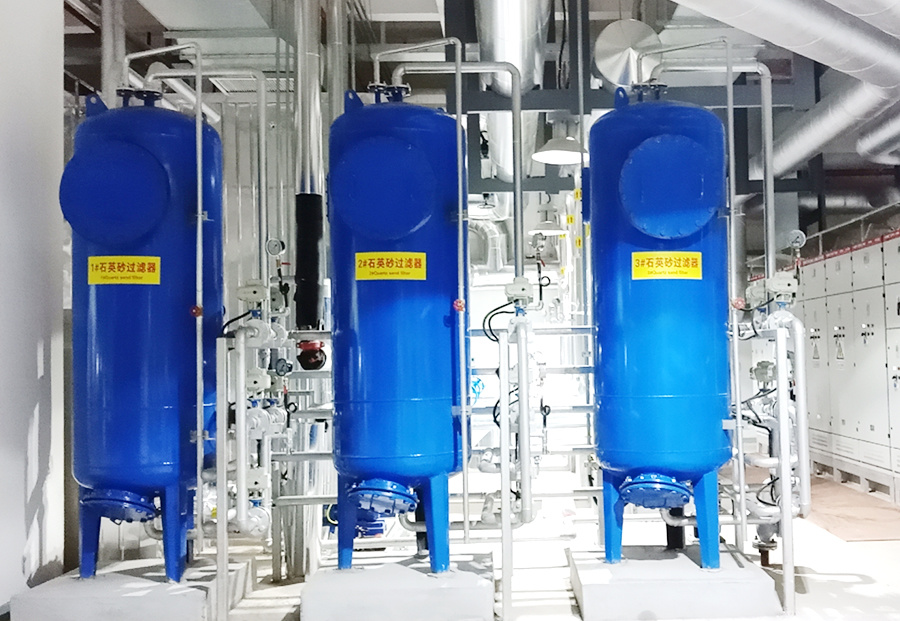To ensure the normal operation of the reverse osmosis equipment, what issues should we pay attention to?
Category:
Time of issue:2021-09-22
Reverse Osmosis Membrane Separation Technology (abbreviated RO technology) is a new and practical water treatment technology. For a specific reverse osmosis system, the long-term stability of its performance is essential. The long-term success of a reverse osmosis system depends on normal operation and maintenance, including commissioning of the entire system, start-up and shutdown, cleaning and maintenance, and prevention of membrane fouling and scaling.
So, how can we ensure the normal operation of the RO system, and what issues should we pay attention to?

1. Initial Startup
( 1) Before starting the startup procedure, thoroughly clean the pretreatment section to flush away impurities and other contaminants, preventing unqualified water from entering the membrane elements.
( 2) With water in the raw water tank, open the inlet valve and drain valve of the mechanical filter, turn on the raw water pump power, at which point the metering pump automatically adds chemicals. Water enters the mechanical filter from the inlet valve and is discharged from the drain valve. After the water is clear, open the inlet and drain valves of the activated carbon filter and the outlet valve of the mechanical filter, close the drain valve of the mechanical filter, and the water enters the activated carbon filter. Test the pollution index of the mechanical filter effluent, and after the activated carbon filter effluent is clear, open the concentrate valve of the RO unit and discharge the pure water.
( 3) Open the RO system inlet valve and close the drain valve of the activated carbon filter to allow low-pressure, low-flow water to flush out air from the elements and pressure vessel, bringing the pressure to 0.2-0.4 MPa. Simultaneously, open the air vent valve of the safety filter to vent air;
( 4) During the flushing operation, check all pipe connections and valves for leaks;
( 5) After flushing for several minutes and the air is expelled, turn on the high-pressure pump, operate at low pressure for a few minutes, then gradually close the return valve and concentrate discharge valve, allowing the pressure to rise slowly until the ratio of freshwater to concentrate is close to the design ratio, but not exceeding it, and ensuring that the pressure does not exceed the design upper limit;
( 6) After stable operation and the water conductivity reaches the required level, open the pure water tank inlet valve, close the pure water discharge valve, and put the qualified water into the pure water storage tank.
2. Routine Startup
Once the RO system starts operating, it should theoretically continue to operate in a stable state. In fact, the RO system needs to be frequently shut down and started. Each start-up and shutdown cycle involves changes in pressure and flow, thus causing mechanical stress on the membrane elements. Therefore, the number of start-ups and shutdowns should be minimized, and the normal start-up procedure should be as smooth as possible. The principle should be the same as the initial start-up procedure, and the most important thing is that the inlet pressure should rise slowly.
3. Normal Shutdown
When shutting down the RO system, before turning off the high-pressure pump, gradually open the high-pressure concentrate valve. Sudden pressure drops are strictly prohibited. Then, flush with permeate or high-quality feed water to remove the high salt content from the membrane module until the conductivity of the concentrate reaches the feed water conductivity. Flushing should be carried out at low pressure (approximately 3 kg/cm2), and a high feed water flow rate is beneficial to cleaning.
The water used for flushing should not contain any chemicals used in pretreatment, and absolutely no scale inhibitors. Therefore, scale inhibitors and sulfuric acid, etc., should be stopped during flushing.
After flushing, completely close the water inlet valve. If the end of the concentrate line entering the drain is lower than the pressure vessel, the air outlet of the concentrate line must be located above the highest point of the pressure vessel; otherwise, the pressure vessel must be evacuated by siphon.
When the system is shut down for more than 48 hours, the following must be noted:
1
The elements must not dry out; dry elements will lose flux and cannot be recovered;
2
The system effectively prevents microbial growth or flushing once every 24 hours. If the membrane tubes cannot be flushed with water every 24 hours, a chemical preservative must be used to preserve systems that have been shut down for more than 48 hours;
3
The system should be protected from extreme temperature changes.
4. Precautions
1. When using the high-pressure pump for the first time, the air vent valve must be opened to vent the residual air in the high-pressure pump.
2. The high-pressure pump must not be run dry.
3. The purpose of the high-pressure pump is to increase the pressure of the water entering the reverse osmosis membrane. The normal post-pump pressure is 10-12 kg.
4. The RO concentrate pressure regulating valve is used to regulate the pressure at the outlet of the high-pressure pump. It is strictly forbidden to completely close the concentrate regulating valve. The more the concentrate pressure regulating valve is opened, the lower the pressure at the high-pressure pump outlet, and the more it is closed, the higher the pressure at the high-pressure pump outlet. It is strictly forbidden to completely close it.
5. The temperature of the reverse osmosis equipment. It can be inferred from the temperature of the base. If the oil hole is used to measure the temperature, it is more accurate. The shaft temperature increases continuously from the start to the operation. After running for 1-2 hours, it tends to be stable. If the shaft is not installed correctly, the temperature will rise sharply, resulting in high temperature. This is mainly due to excessive lubricant.
6. For small mechanical manual rotation, confirm whether the rotation is smooth. If the rotation is not smooth due to scratches or foreign objects, it is mainly caused by poor installation of the base.
7. For large machinery that cannot be manually rotated to confirm, first cut off the power, check for vibrations, noise, etc., and confirm that there are no abnormalities before operation.
Tags:
-- Recommended --
Shijiazhuang Tianwang Environmental Protection Technology Co., Ltd.
Shijiazhuang Tianwang Environmental Protection Technology Co., Ltd. is a high-tech enterprise specializing in the research and development, manufacturing and sales of water treatment equipment.
Contact Information
Production address: No. 9, Fengchan Road, Economic and Technological Development Zone, Shijiazhuang City
Office Address: 25th Floor, Block C, No. 310 Changjiang Avenue, Shijiazhuang High-tech Development Zone
Contact Number:
0311-89272359 0311-68039237
Enterprise Email:
twhbkj@163.com
Website: en.sjztwhb.com







